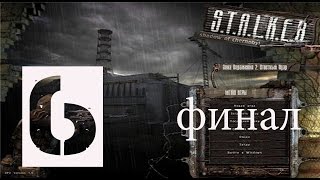Friday, 19 December, 2025г.
















Где искать: по сайтам Запорожской области, статьи, видео ролики
пример: покупка автомобиля в Запорожье
ISO Comparison: Canon EF 50mm f/1.2L USM vs Canon EF 50mm f/1.8 II
Canon 50mm f/1.8 II: http://amzn.to/1vKYykg
Canon 50mm f/1.2: http://amzn.to/1y20WXl
Visit my business site: http://billigvideo.dk
This is a short low light ISO test I did comparing my new EF 50mm f/1.2L USM with my EF 50mm f/1.8 II.
The EF 50mm f/1.2L USM is a professional L series lens designed to replace the EF 50mm f/1.0L USM. It is the shorter of the two f/1.2 lenses Canon makes, the other being the EF 85mm f/1.2L II USM. It is constructed with a metal body and mount, and plastic extremities. This lens features a wide rubber focusing ring that is damped, a distance window with infrared index, and is weather-sealed. A circular, 8-blade diaphragm and maximum aperture of f/1.2 give this lens the ability to create very shallow depth of field effects with smooth background blur. The optical construction of this lens contains 8 lens elements, including one ground and polished aspherical lens element. This lens uses a floating front extension focusing system, powered by a ring-type USM motor. The front of the lens does not rotate or extend when focusing.
The EF 50mm f/1.8 II replaced the EF 50mm f/1.8 in 1991. The original (now discontinued) Canon EF 50mm f/1.8 lens came equipped with a metal lens mount, distance scale, IR focusing label and separate manual focusing ring. The current Canon EF 50mm f/1.8 II lens has a plastic lens mount and is missing a distance scale, IR focusing label and dedicated manual focusing ring. Instead the manual focusing ring has been replaced by a very small thin focusing ring on the front tip of the lens. However the lens does not suffer from rotating front lens element and can be used with polarizing filters. The optics for both lenses are identical, with 6 elements in 5 groups and a 5 blade diaphragm. The 'nifty-fifty' has a 52mm filter thread.
The 50mm focal length, when used with a 35mm film or full-frame sensor, has been widely considered to match the field of view seen by the human eye.[7] When pairing the EF 50mm f/1.8 II to a Canon DSLR with an APS-C sized sensor, photographers must apply a focal length multiplier (also known as a crop factor) in order to get the effective 35mm field of view equivalent. Most entry level Canon DSLRs come with a crop factor of 1.6x, which effectively turns the 50mm focal length into a 80mm field of view (50 x 1.6 = 80mm).
Because of its low price and sharp optical quality, this lens has earned the nicknames 'nifty fifty' and 'plastic fantastic'. When shooting at f/1.8, it offers a very shallow depth of field which is beneficial for isolating subjects against a blurred background
The EF 50mm lenses are a group of normal prime lenses made by Canon that share the same focal length. These lenses are based on the classic double-Gauss lens, with the f/1.8 being a standard six-element double-Gauss with an air gap and powers between element 2 and 3 and its faster cousins adding additional elements.
These lenses have an EF type mount that fits the Canon EOS line of cameras.
Six EF 50mm lenses have been developed and sold. Two are L series lenses and three have Ultrasonic motors.
Since the f/1.2L, f/1.4 and f/1.8 lenses can provide very similar wide-aperture shots but have very different price tags, they have naturally been the subject of many in-depth comparisons.
f/1.0L USM (discontinued, replaced by f/1.2L)
f/1.2L USM
f/1.4 USM
f/1.8 (discontinued, replaced by f/1.8 II)
f/1.8 II
f/2.5 Compact Macro
Visit Bleep Films: http://www.bleepfilms.dk
Теги:
Film Speed Ultrasonic Motor Canon EF Lens Mount Camera Digital Short low light ISO ISO speed 1080p Panasonic Camcorder 720p Short Film Footage Photography Samsung Zi6 Eos Sony Mark Hdtv Cameras D90 New Camera Cannon Run Macro Faraday Constant Sample Rebel Angle Lost Tripod Plasma Hv30 Review Hv20 Powershot Filming 35mm
Похожие видео
Мой аккаунт


 У вашего броузера проблема в совместимости с HTML5
У вашего броузера проблема в совместимости с HTML5


